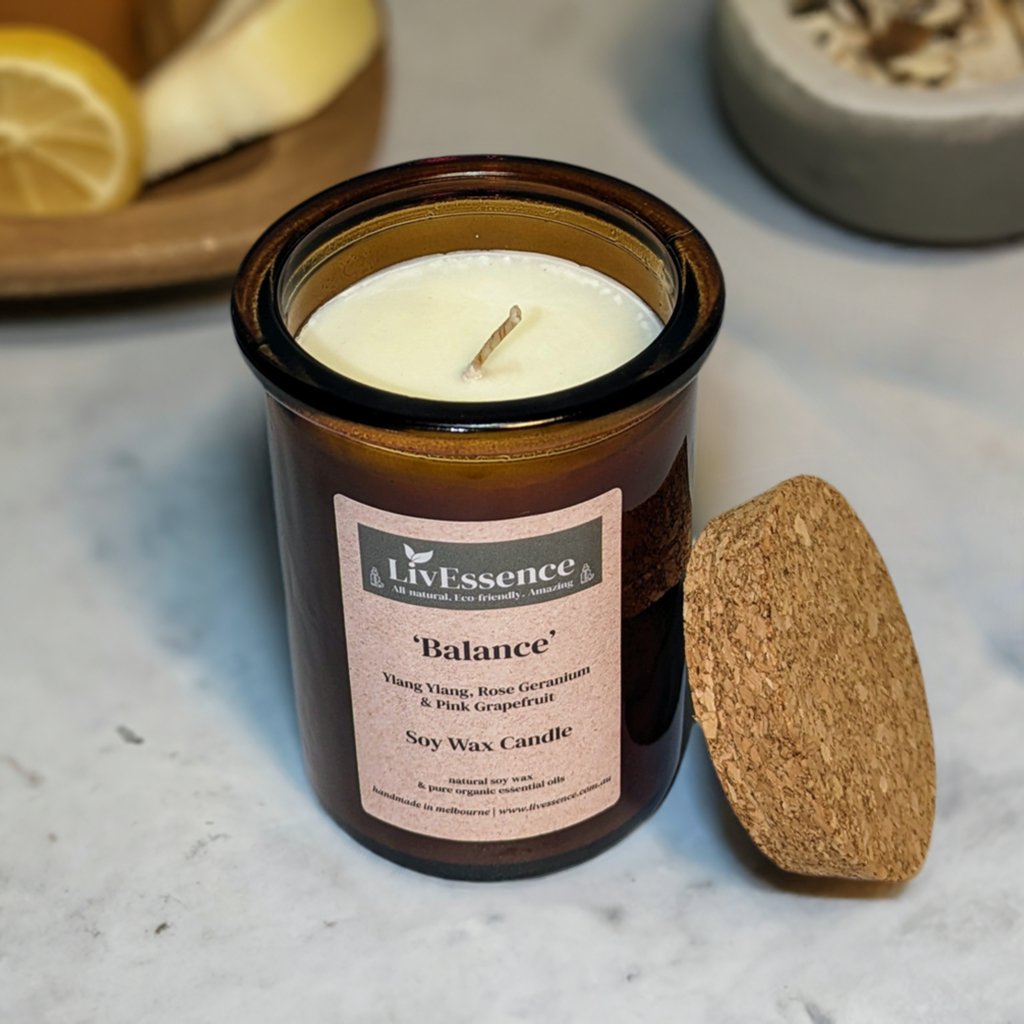Create Atmosphere with Handmade Soy Wax Candles and Home Fragrance
Create Atmosphere with Handmade Soy Wax Candles and Home Fragrance
Blog Article
From Wick to Wax: Understanding the Chemistry Behind Soy Wax Candles and Their Environmental Impact
As we illuminate our spaces with the cozy glow of candle lights, there lies a world of detailed chemistry behind the relatively easy act of lighting a soy wax candle light. The selection between soy and paraffin wax extends beyond plain looks, delving into the world of ecological impact and the very composition of the materials. Understanding the molecular structure of soy wax and its combustion procedure drops light on the discharges released into our environments. Join us as we unwind the scientific details behind soy wax candle lights and explore their implications on our atmosphere.
Soy Wax Vs. Paraffin Wax
When contrasting soy wax and paraffin wax for candle light making, it is important to recognize the distinctive features and benefits of each material. Soy wax is a natural, renewable energy obtained from soybean oil, making it eco-friendly and eco-friendly - soy candles. In contrast, paraffin wax is a byproduct of petroleum refining, which elevates worries about its environmental impact and sustainability
Soy wax candle lights shed cleaner and release less soot compared to paraffin wax candle lights, making them a healthier selection for interior air top quality. Furthermore, soy wax has a reduced melting factor, permitting a longer-lasting candle light that spreads fragrance a lot more effectively. Paraffin wax, on the various other hand, has a tendency to melt faster and less cleanly, potentially launching unsafe chemicals into the air.
From a sustainability perspective, soy wax is favored for its biodegradability and renewable sourcing, aligning with the expanding customer choice for environmentally aware items. While paraffin wax has been a conventional selection in candle light making because of its affordability and simplicity of usage, the change in the direction of green choices like soy wax is getting energy in the sector.
Chemical Structure of Soy Wax

Combustion Process in Soy Candles
The chemical make-up of soy wax directly influences the combustion process in soy candle lights, influencing variables such as burn time, fragrance release, and ecological impact. When a soy candle is lit, the heat from the flame melts the wax near the wick. This fluid wax is then formulated the wick because of capillary activity. As the fluid wax gets to the fire, it undergoes and evaporates burning. The burning procedure includes the vaporized hydrocarbons in the wax reacting with oxygen airborne to generate heat, light, water vapor, and carbon dioxide.
The combustion performance of visit the website soy candle lights is influenced by the purity of the soy wax and the quality of the wick. A clean-burning soy candle light with a properly sized wick will certainly produce a steady flame and lessen residue formation. This not only expands the melt time of the candle light however additionally enhances the launch of scents. Furthermore, soy wax candle lights have a reduced ecological impact contrasted to paraffin candle lights due to their sustainable and naturally degradable nature.

Environmental Benefits of Soy Wax

Taken into consideration a sustainable option to standard paraffin wax, soy wax offers noteworthy ecological advantages that make it a popular option amongst eco-conscious customers. Soy wax burns cleaner and generates less soot than paraffin wax, contributing to far better interior air high quality and decreasing the requirement for cleaning and upkeep. Generally, the environmental advantages of soy wax straighten with the expanding need for sustainable and eco-friendly products in the market.
Recycling and Disposal Factors To Consider
Recycling and proper disposal of soy wax candles play a crucial function in keeping ecological sustainability and decreasing waste in communities and families. When it comes to reusing soy wax candle lights, the very first step is to make certain that the candle has actually shed completely.

In terms of disposal, if recycling is not an option, soy wax candles are eco-friendly and can be safely disposed of in many house waste systems. Nonetheless, it is constantly recommended to contact local reusing centers look at more info or waste administration services for certain guidelines on candle disposal to guarantee appropriate handling and ecological defense.
Final Thought
Finally, the chemistry behind soy wax candle lights exposes their ecological benefits over paraffin wax candle lights. Soy wax, originated from soybean oil, burns cleaner and produces much less soot when contrasted to paraffin wax. The combustion process investigate this site in soy candle lights is more efficient, bring about a longer and much more even shed. Furthermore, soy wax is biodegradable and sustainable, making it a much more sustainable option for candle production. Reusing and proper disposal of soy wax candle lights even more add to their ecological influence.
When contrasting soy wax and paraffin wax for candle light making, it is necessary to recognize the distinctive attributes and advantages of each material (crystal soy candles).Soy wax candle lights burn cleaner and discharge less residue compared to paraffin wax candle lights, making them a much healthier selection for interior air quality.Taken into consideration a lasting alternative to conventional paraffin wax, soy wax offers significant environmental benefits that make it a prominent choice among eco-conscious consumers. Soy wax burns cleaner and creates much less residue than paraffin wax, adding to better indoor air quality and minimizing the demand for cleansing and upkeep.In final thought, the chemistry behind soy wax candles discloses their environmental benefits over paraffin wax candle lights
Report this page